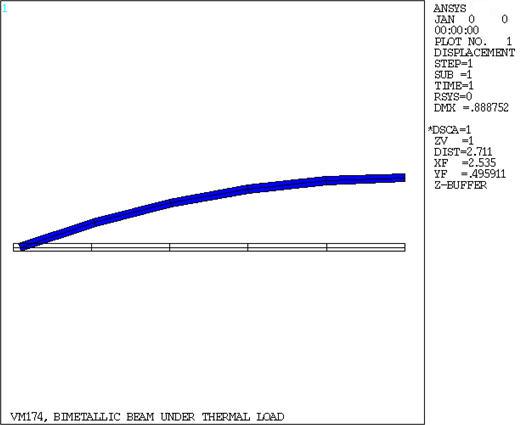VM174
VM174
Bimetallic Beam Under Thermal Load
Test Case
A bimetallic beam consists of two materials with different coefficients
of thermal expansion, α1 and α2, and is initially at a reference temperature of 0°F.
The beam is simply supported and a uniform temperature is applied
to both surfaces. The beam is expected to undergo a large lateral
deflection. Determine the midspan deflection after heating and verify
the temperature T at the material interface.
Analysis Assumptions and Modeling Notes
The problem involves a coupled thermal-stress analysis with
large deflections and thus requires an iterative solution. Since
the problem is symmetric, only one-half of the beam is modeled. The
AZ degree of freedom is not required in this analysis and is excluded
from the matrix formulation by not specifying any magnetic material
properties. A convergence criteria for force is specified with a
tight tolerance to converge the large deflection behavior.



